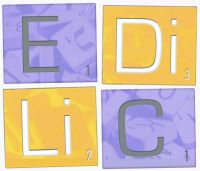Speaker
Description
Cette présentation explore comment des pratiques artistiques, multimodales et plurilingues créent des espaces d’apprentissage relationnel et de communauté pour des adultes immigrants apprenant l’anglais en Colombie-Britannique, Canada. Dans le cadre de cette recherche doctorale, quinze adultes immigrants volontaires ont participé à une série de cinq ateliers dans un centre communautaire pour nouveaux arrivants. Ces ateliers mobilisaient des créations artistiques – photographies, collages et récits d’objets plurilingues – comme moyens d’expression des identités et des trajectoires d’appartenance et de mobilité (Burgess et Rowsell, 2020; Maginess et al., 2023).
Ancrée dans des approches relationnelles et sociomatérielles (Dagenais, 2019; Escobar, 2018; Kell et Budach, 2023), cette recherche explore comment la créativité et le sensible agissent comme forces unificatrices, traversant les frontières entre humain, langues, cultures, et monde matériel (Waterhouse, 2021). Les créations artistiques des participants deviennent des agents actifs ouvrant des espaces où apprentissage linguistique et construction communautaire convergent.
Ces pratiques transforment les récits personnels en espaces de résonance partagée (Moore, 2024), tout en mobilisant des ressources sémiotiques variées pour (re)construire des expériences vécues des participants (Kalaja et Melo-Pfeifer, 2024).
Les rencontres sensorielles et relationnelles avec des artefacts et des textes multimodaux favorisent une compréhension incarnée de l’appartenance et des engagements dialogiques, permettant d’explorer des manières d’être, de savoir et de faire au-delà des frontières anthropocentriques et sociopolitiques (Van Viegen et Lau, 2022).
Ce travail met en lumière le potentiel des méthodologies artistiques pour enrichir les pratiques de littératie dans les classes de langue destinées aux adultes immigrants au Canada, et pour élargir des répertoires de pratiques favorisant une reconnaissance accrue des savoirs et trajectoires migratoires. Il illustre comment ces approches renforcent le dialogue entre recherche académique et expériences vécues (Kubota, 2023), tout en affirmant la capacité de l’art à façonner des espaces d’appartenance.
Content/contenu/Inhalt 2
This presentation explores how artistic, multimodal, and plurilingual practices create spaces for relational learning and community building among immigrant adults learning English in British Columbia, Canada. As part of this doctoral research, fifteen immigrant adults participated in a series of five workshops held at a community center for newcomers. These workshops used artistic creations—photographs, collages, and multilingual object narratives—as tools to express identities and trajectories of belonging and mobility (Burgess & Rowsell, 2020; Maginess et al., 2023).
Grounded in relational and sociomaterial approaches (Dagenais, 2019; Escobar, 2018; Kell & Budach, 2023), this research examines how creativity and sensory engagement function as unifying forces, crossing boundaries between the human, languages, cultures, and the material world (Waterhouse, 2021). Participants' artistic creations become active agents, fostering spaces where language learning and community building converge.
These practices transform personal narratives into spaces of shared resonance (Moore, 2024), drawing on diverse semiotic resources to (re)construct participants’ lived experiences (Kalaja & Melo-Pfeifer, 2024). Sensory and relational encounters with multimodal artifacts and texts enable embodied understandings of belonging and dialogical engagement, inviting exploration of ways of being, knowing, and doing beyond anthropocentric and sociopolitical boundaries (Van Viegen & Lau, 2022).
This research underscores the potential of artistic methodologies to enrich literacy practices in language classes for adult immigrants in Canada and expand repertoires of practices that foster greater recognition of migratory knowledge and trajectories. It illustrates how these approaches strengthen the dialogue between academic research and lived experience (Kubota, 2023), while affirming art's ability to shape spaces of belonging.
References
Burgess, J. et Rowsell, J. (2020). Transcultural-affective flows and multimodal engagements: reimagining pedagogy and assessment with adult language learners. Language and Education, 34(2), 173-191. https://doi.org/10.1080/09500782.2020.1720226
Dagenais, D. (2019). Explorations du sociomatériel dans les recherches sur l’apprentissage et l’enseignement des langues. Canadian Modern Language Review, 75(4), 319-328. https://doi.org/10.3138/cmlr.2019-0005
Escobar, A. (2018). Designs for the Pluriverse: Radical Interdependence, Autonomy, and the Making of Worlds. Duke University Press. https://doi.org/10.1215/9780822371816
Kalaja, P. et Melo-Pfeifer, S. (2024). Introduction: Being Multilingual and Living Multilingually – Advancing a Social Justice Agenda in Applied Language Studies. Dans P. Kalaja et S. Melo-Pfeifer (dir.), Visualising Language Students and Teachers as Multilinguals: Advancing Social Justice in Education (p. 1-23). https://doi.org/10.21832/9781800412101
Kell, C. et Budach, G. (2023). Materialities and ontologies: Thinking multilingualism through language materiality, post-humanism and new materialism. Dans McKinney, P. Makoe et V. Zavala (dir.), The Routledge Handbook of Multilingualism (p. 79-95). Routledge. https://doi.org/10.4324/9781003214908
Kubota, R. (2023). Linking Research to transforming the real world: critical language studies for the next 20 years. Critical Inquiry in Language Studies, 20(1), 4-19. https://doi.org/10.1080/15427587.2022.2159826
Maginess, T., Wilbur, A. et Bergia, E. (2023). Images of Incoming: A Critical Account of a (Mostly) Postdigital Photovoice Project with Rural Migrant Women in Northern Ireland and Canada. Dans P. Jandrić, A. MacKenzie et J. Knox (dir.), Constructing Postdigital Research (p. 295-315). Springer Cham. https://doi.org/10.1007/978-3-031-35411-3
Moore, D. (2024). Walking our Landscape as Interculturality. A visual Essay in Resonances. Dans F. Dervin (dir.), The Routledge Handbook of Critical Interculturality in Communication and Education (p. 308-328). Routledge.
Van Viegen, S. et Lau, S. M. C. (2022). Becoming Critical Sociolinguists in TESOL Through Translanguaging and Embodied Practice. TESL Canada Journal, 38, 199-213. https://doi.org/10.18806/tesl.v38i2.1361
Waterhouse, M. (2021). Art, affect, and the production of pedagogy in newcomer language classrooms. Language and Education, 35(3), 268-284. https://doi.org/10.1080/09500782.2020.1846554
| Title/ titre/Titel 2 | Weaving plurilingual literacies and sense of belonging through artistic creations: Adult immigrants’ experiences in Canada |
|---|

